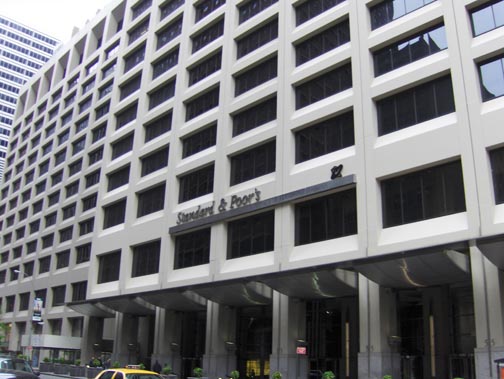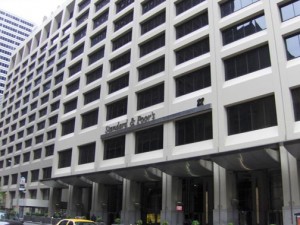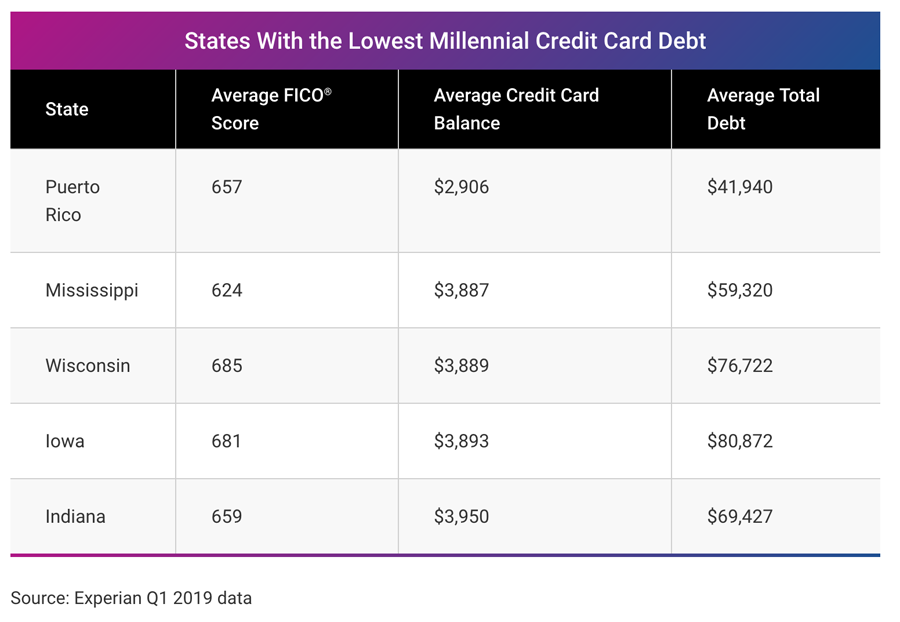S&P affirms Puerto Rico’s ‘BBB-’ rating, negative outlook

Standard & Poor’s Ratings Services this week affirmed its ‘BBB-‘ rating and negative outlook on Puerto Rico’s general obligation (GO) and appropriation debt, based on — among other things — the commonwealth’s weak economic trends that began in fiscal 2007, including population declines and economic contraction.
In its rationale, the ratings agency said Puerto Rico’s strong ties to the U.S. economy result in a significant flow of trade and income transfers and pointed out structural deficits in the commonwealth’s general fund for more than a decade.
“The negative outlook reflects ongoing negative demographic, economic, and fiscal trends, and the possibility that market access concerns could affect the ability to roll over notes, finance operating deficits, and renegotiate liquidity agreements, if recent tax increases do not prove sufficient to lower operating deficits,” said Standard & Poor’s credit analyst David Hitchcock.
However, agency noted the government’s willingness to tackle some long-term structural issues, as indicated by enactment of substantial pension reform, elimination of subsidies for its water and sewer authority, and large recent tax increases, which Puerto Rico projects will enable structural balance by fiscal 2016, when combined with restrained increases in spending.
In fiscal 2013, Puerto Rico experienced a $2.1 billion general fund deficit of recurring revenues minus recurring expenditures on a budgetary basis, or a large 22 percent of expenditures, twice what was originally budgeted, S&P said.
“In our view, the larger-than-budgeted deficit was primarily the result of economic contraction when the 2013 budget had originally projected economic growth. The operating deficit followed a long string of earlier operating deficits, despite what we viewed as a significant reduction in employee headcount and payroll that occurred in fiscal 2010,” the agency said.
A new administration came into office at the beginning of calendar 2013 and reversed earlier tax cuts, made small mid-year fiscal 2013 reductions in expenses, and significantly expanded the sales and use tax base to new business services, calculated to raise more than $1 billion of new revenue in fiscal 2014.
“The new administration signed a fiscal 2014 budget that has what we calculate as a reduced $820 million operating deficit that will need to be financed, or 7.9 percent of appropriations,” the agency said in its rationale.
“In our view, staying close to the $820 million budgeted deficit in fiscal 2014 and substantially reducing the deficit in fiscal 2015 remains critical to reducing the growth in Puerto Rico’s tax-supported debt, which has risen in our calculation nearly 49 percent in the past four years primarily as a result of deficit financing,” Hitchcock said.
The analyst said Gov. Alejandro García-Padilla’s administration has made significant structural pension reform, reduced water and sewer operating subsidies through significant rate increases, and taken important tax-raising measures to restore fiscal balance.
However, S&P believes the resumption of weak economic results limits the government’s ability to implement additional revenue enhancements, while expenditures reductions may be constrained by the current administration’s goal not to conduct layoffs.
Outlook could be revised
“We could revise the outlook back to stable if the economy gains positive momentum and budget deficits remain close to budgeted projections through fiscal 2015,” Hitchcock added.
“We could lower the rating by one notch if the economy deteriorates to the point we believe it significantly hampers the ability to lower budget deficits, the projected deficit for fiscal 2014 widens, it appears that no significant budget reduction will likely occur in fiscal 2015, or the loss of market access significantly hampers the ability to finance deficits or roll over and refinance debt, liquidity agreements, or meet swap termination costs,” he said.
Although S&P sees the credit strength of the Puerto Rico Sales Taxes Financing Corporation (known as COFINA in Spanish) allowing future market access, should the vehicle prove unavailable or unaffordable, it could trigger a downgrade.
“In addition, given the disproportionate reliance of Puerto Rico’s economy on federal transfers, a significant reduction in these transfers, or other federal actions or inactions that could significantly affect the economy or the budget could also have the potential to lead to a downgrade,” Hitchcock concluded.














